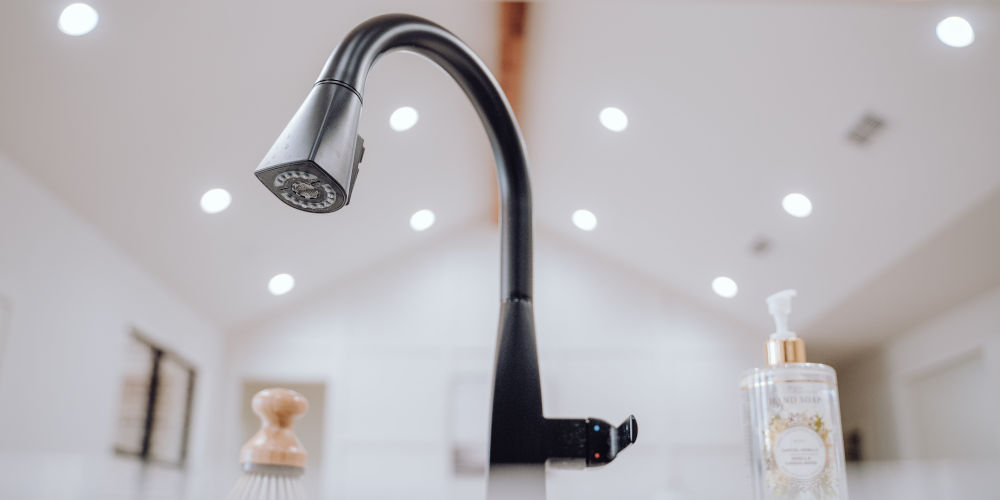Z-Wave vs Z-Wave Plus: What’s the difference?

On the surface, comparing Z-wave vs Z-Wave Plus might seem like a marketing ploy. We’ll make a few extra quid by adding a few new letters! And while Z-Wave Plus is essentially just an extension of Z-Wave, it is superior in several ways.
Z-Wave Plus devices use the 5th Generation chips (500 and 700 series) and offer several improvements over the previous Z-Wave. These include longer battery life, improved range, better diagnostics and easier installation.
So, let’s explore Z-Wave vs Z-Wave Plus in more detail. You’ll quickly understand why Z-Wave Plus is superior to the classic Z-Wave and how to tell the difference when buying devices to ensure you make a future proof investment.
What is Z-Wave?
Z-Wave is a low-powered wireless protocol that creates a strong mesh network. It’s ideal for a range of uses, including home automation.
Every device repeats signals creating a mesh network, ensuring every device receives the message. Even if devices are out of the hub’s range, the mesh network ensures every message reaches every device.
As devices can have a range of up to 100 metres, as long as devices are within 100 metres of each other, the whole network can be as large or small as you need it. A Z-Wave network can support up to 119 devices, giving you over 21,000 metres of total coverage.
Even with a mega-mansion, a Z-Wave system will be more than sufficient.
Each device in the network has a unique ID, making it easier to set up and keep it secure. Also, Z-Wave doesn’t interfere with other wireless networks, such as Wi-Fi. So, it is 100% compatible with your other systems.
As all Z-Wave hubs connect to a Wi-Fi router, you can control your system and devices from anywhere with an internet connection. You can use your smartphone and tablet to check on your Z-Wave network around the clock.
Don’t like coming home to a cold house? Switch on your heating remotely as you leave the office! Travelling often but want to make your home lived in? Set up your Z-Wave to mimic your behaviour, including turning on lights, switching on the TV and drawing the curtains.

How is Z-Wave Plus different?
The new generation enhances the user experience by improving speed and ease of installation. Building on the original specifications of Z-Wave, Plus is the latest advance in this exciting technology.
Z-Wave Plus offers extended capabilities, including increased range, extended battery life, over-the-air (OTA) upgrading, and additional RF channels. All of these are fully compatible with existing Z-Wave products.
These enhancements offer tremendous benefits, including shorter and easier installations, richer device profiles, improved self-healing and longer battery life.
Differences: Z-Wave vs Z-Wave Plus
While Z-Wave and Z-Wave Plus are very similar, Plus offers multiple improvements. Some of the main differences between Z-Wave vs Z-Wave Plus include:
- Battery – 50% more battery life
- Range – Devices can communicate up to nearly 100 metres further
- Installation – New devices automatically connect to the network for easier installation
- Bandwidth – 250% more data
- Diagnostics – The new Explorer Frame feature allows devices to address issues on their own and allows for peak efficiency
- Channels – Z-Wave Plus offers three new F Channels that increase bandwidth and improve device connections.

Similar yet different smart home protocol
Hopefully, you can see they are quite similar from a foundational level, but Plus offers multiple improvements. You can use your Z-Wave Plus devices with Amazon Alexa, Google Assistant, and Fibaro hubs.
A major difference is that with Z-Wave Plus, your smart home apps can now control more devices using third-party monitoring. So, you can control your Philips Hue lighting and Yale door locks with a single app.
Sadly, you’ll still encounter a few devices that won’t work (at least not yet). However, a central app, like Fibaro’s Yubii app, will control about 90% of your Z-Wave and Z-Wave Plus devices.
Should you upgrade to Z-Wave Plus devices?
There’s no reason to bin your Z-Wave devices and upgrade everything to Z-Wave Plus. Over time, it’s worth exchanging your smart home devices for Z-Wave Plus ones or investing in them as you expand your system.
If you’re about to build your first smart home, start with a Z Wave Plus kit. Next, look at eBay or Facebook Marketplace for slightly older models of devices that are still Z-Wave Plus. You’ll be upgrading devices without breaking the bank.
From there, add new Z-Wave Plus devices to your system and slowly automate your home using the next-generation protocol. Don’t get overly concerned about the Z-Wave vs Z-Wave Plus debate, especially if you’re new to the world of the smart home.

The future according to Z-Wave
Z-Wave continues to evolve and improve yet is still 100% backwards compatible back to 2002 when the 100 series was initially released.
The Z-Wave certification program continues to develop new features that improve devices while still being interoperable with every other Z-Wave device on the market.
Newer devices undergo more rigorous testing and use the latest chipsets for better RF range and mesh network routing algorithms. If you have the choice, buy devices using the latest technology.
Check you only buy Z-Wave devices!
Z-Wave Plus devices will cost a little more, but the extra investment is worth it. As Z-Wave Plus devices use the 500 and 700 series chips, you’re investing in the latest RF technology and firmware.
Another thing with Z-Wave Plus to remember is these devices have undergone the rigorous Z-Wave Alliance Certification program testing, which is difficult to pass.
Overall, don’t be concerned if you have a house full of Z-Wave devices or are planning to buy some, as they will still be interoperable with future Z-Wave versions.
Hopefully, you have a clearer idea of the differences between Z-Wave vs Z-Wave Plus.




